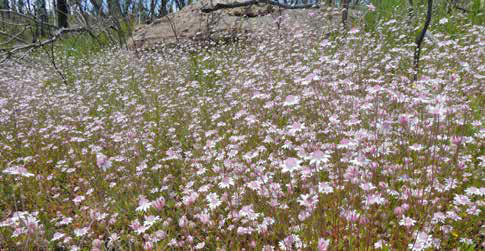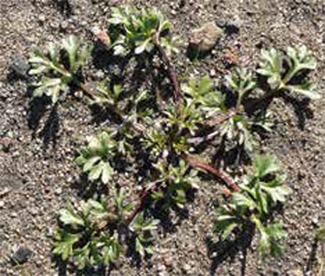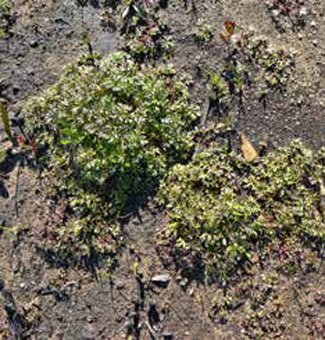Flower of the season
By Roger Farrow
June 2021

There can only be one choice for the flower of this season and that is the Pink Flannel Flower, Actinotus forsythii. It has been putting on mass displays this summer from the Blue Mountains to the Budawangs and along the coast. It has even made the news in many regional and national newspapers and ‘The Conversation” where it featured in “5 remarkeable stories of flora and fauna in the aftermath of Australia’s horror bushfire season”.
However, my story starts much earlier in the previous autumn with the germination of a range of different plants following substantial rains in the fire-affected areas of Moreton NP along the Nerriga road. As we have a comprehensive list of plants from a sequence of sites accessed from this road, I thought it would not be too difficult to identify what species were regenerating in this landscape. We readily identified seedling Fabaceae Epacridaceae, Proteaceae and Casuarinaceae, among others, but two seedling types puzzled us although they were growing in extensive patches at a number of different sites.
Therefore, we had to await their growth through winter and to their eventual flowering during the following spring and summer. The first of these plants to flower in September was easily identified as Commersonia (Rulingia) hermannifolia, a plant never before seen by ANPS in this area in the two decades that we had been monitoring plants here (as reported in the November 2020 edition of the Journal). The second species did not flower until December and turned out to be Actinotus forsythii, the Pink Flannel Flower, again never seen by ANPS members before in this area. Reports of the mass flowering of this species came from heathlands in a wide area from the Blue Mountains to the Budawangs.



These two species are described as fire-dependent ephemerals and join another species in this category, Dampiera fusca, that appeared briefly after the 2003 fires in the ACT and the 2006 fires in the Tinderry Range. Their strategy is to germinate on the rains following destructive bushfires that clear the landscape of the ground vegetation, leaving an open ash bed. They grow rapidly and survive for one or two seasons producing prolific amounts of seed while the competing herbaceous plants and shrubs slowly regenerate and cover the ground. After reproducing, the plants die back and virtually disappear until the next catastrophic fire that may be decades away, when their seeds germinate and they start their brief life cycle again. Outside of the rainforests, most Australian plants are adapted to survive intermittent bush fires and their reproduction is often fire dependant. The strategy described here is one of several evolved by Australian plants to survive fire. Other strategies include seed capsules that only open and release seeds when exposed to the high temperatures in a fire when the parent plants often die.
Back to Articles List
